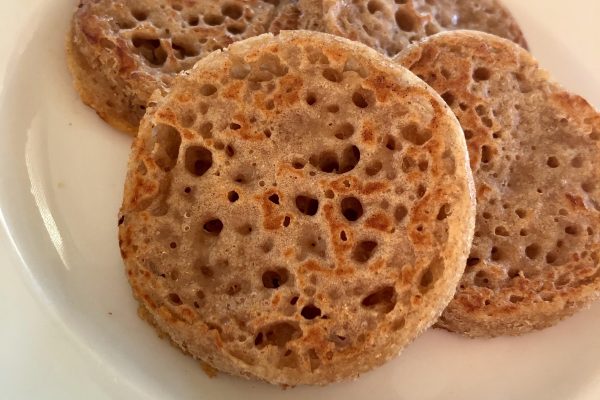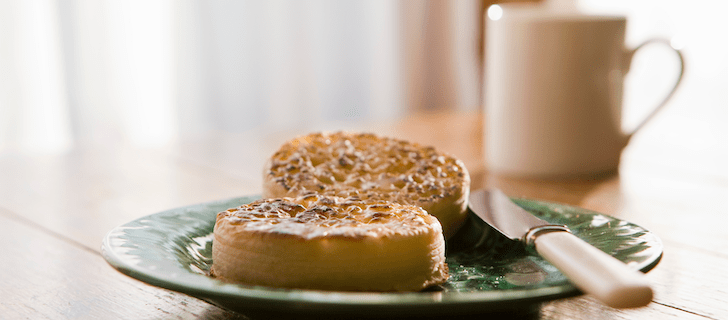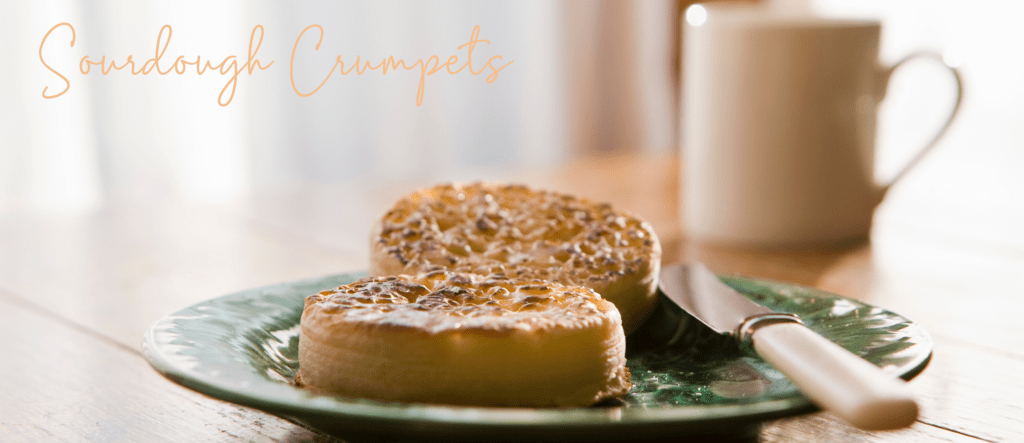Why sourdough?
Click here to skip to the recipe
Covid19 certainly changed some things in most people’s lives. One of my favourite things was hearing about how broccoli seedings and baking flour was selling out everywhere. The extra time at home and fear of “essentials” running out, had people quickly turning to old practices like home veggie gardens and breadmaking.
On my social media feeds, there was a lot of talk of making sourdough. We don’t eat much bread in our house, it’s just not part of the routine. However, soup on a cold day and home-made baked beans just aren’t the same without a piece of toast slathered in butter. So when we do have bread it’s usually good quality sourdough.
Sourdough when made using traditional methods is a fermented bread. Flour is mixed with water and left to “sour”. What actually happens is the mixtures takes on yeast and beneficial bacteria (lactobacilli) from the air and uses this as with ‘modern’ breads using baker’s yeast. Sourdough is often tolerated by those with gluten intolerance (not coeliac) as the gluten protein is digested by the yeast and bacteria.
Lactobacilli are lactic-acid producing bacteria. As explained in Nourishing Traditions by Sally Fallon, “Lactic acid is a natural preservative that inhibits putrefying bacteria.” In this book, she goes on to describe how many cultures around the world traditionally used “lacto-fermentation” to preserve, increase the bio-availability of nutrients and with the digestion of fruits and vegetables, grains and dairy products.

Sourdough is made using a sourdough “starter”. This contains flour, water and a ready colony of yeast and bacteria. You can make the starter yourself or get some from a friend. Googling “making a sourdough starter” can be very overwhelming. There are so many articles, pictures, videos and infographics on the ‘best’ way to do it.
My suggestion is to find someone who knows what they’re doing to help you. In the Riverland, this person is Tia Ingle. You can find her on Facebook as No Need to Knead and Instagram @tiaingle. You Tube also has some great videos. This is one of the best I’ve seen, especially if you like accents 😉
Getting to the recipe…
It can be disheartening, especially if you’re like me and don’t like waste, to pour half your starter into the bin (don’t put it down the drain, it will clog). Unless you have an endless list of friends who want to share it, it’s nice to find something constructive to do with it. That’s where crumpets come in!
Oh my! I do love crumpets. Slathered with butter, smeared with honey, smooshed with peanut butter. You would be very surprised to see how easy it is to make them.
Supermarket crumpets (like many supermarket products) have a large list of ingredients. Here’s the list from the supermarket variety: Wheat Flour, Water, Raising Agents (500, 450), Iodised Salt, Dextrose, Preservatives (282, 234), Vitamins (Thiamin, Folate).
I don’t even want to google what those numbers are and the effects they may have on our body.
So here’s the ingredients from my crumpets:
- Spelt flour
- Water
- Baking soda
- Coconut sugar
- Salt.
You can use wheat flour or any other flour. You can also use any type of sugar. These are just the ones in my pantry. The flour and water is what’s in your sourdough starter. Whatever you are discarding in preparation to “feed” your starter, this is what you put in the crumpets. If you don’t understand “feed” or “discard”, watch the video above or contact Tia.
I cook the crumpets in a large amount of ghee. You can use oil or butter. But if you use enough (and you can never use too much ghee in my opinion) you don’t even need to butter them. Just eat straight out the frying pan!
Sourdough Crumpets
Ingredients
- 1 cup/227g sourdough starter
- 1 tsp coconut/rapadura sugar*
- 3/8 tsp baking soda
- ½ tsp celtic salt
- 1-2 tbsp of ghee (or oil or butter) †
- 4x 3inch egg rings

Method
- Weigh or measure your starter into a jug or small bowl. I use a 2 cup pyrex jug.
- Mix in the sugar and the salt.
- Grease 4 egg rings and warm in your greased frying pan. The more butter or ghee the better!
- Add the baking soda to the starter mix. It will fluff up a bit as the baking soda does it’s thing.
- Fill each egg ring about ¾ full and watch the bubbles appear.
- You should be able to flick the egg ring off when you can see it’s cooked around the outside.
- When most of the bubbles have popped at the surface, flip your crumpet and lightly cook on the top.
- Remove them from the pan, try not to eat them all at once and re-grease your egg rings and pan and do it again until your batter is gone.
I usually have enough to make 8 crumpets, which is just enough for 2 people. If you’re feeding more you’ll obviously have to double or triple the recipe. To ensure you have enough starter, make sure you are feeding your starter plenty of flour and water in the days before. I usually feed mine between 50 and 100g of each flour and water.
Notes
*I use rapadura or coconut sugar as they aren’t refined like white, castor or brown sugar. They still have their nutrients (yes there are nutrients in sugar) so are a healthier option. But remember they are still sugar.
† You can use any kind of oil or fat. I mostly use ghee for cooking as it’s doesn’t alter the structure at high temperatures. Ghee is essentially butter with the milk solids taken out so it’s ok for those avoiding dairy.



